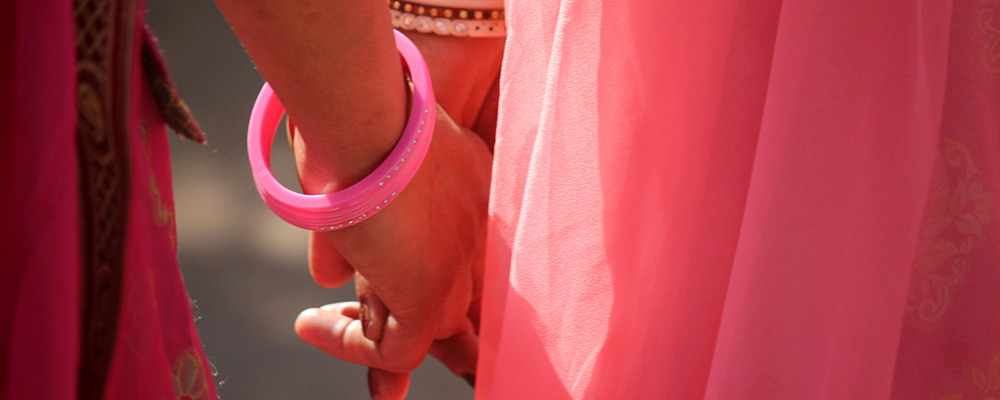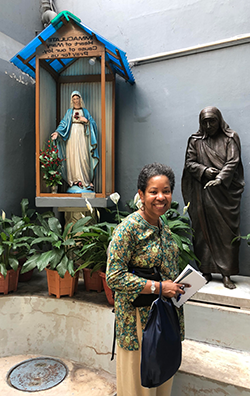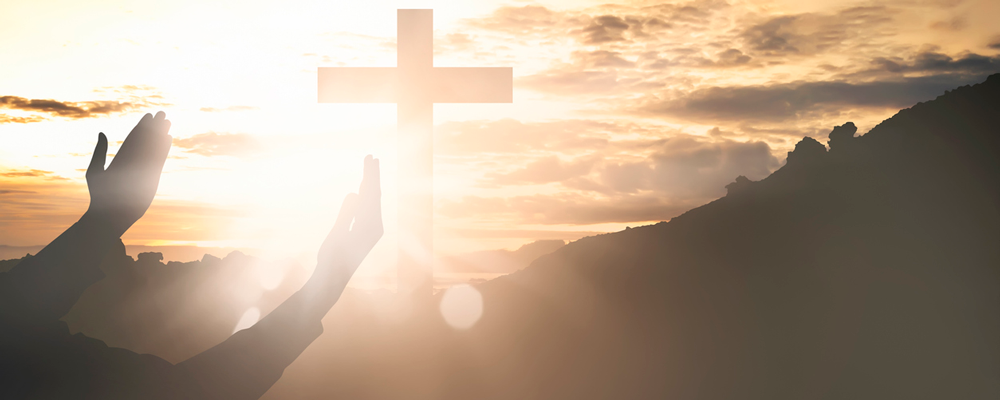
Prayer, Praise, and Prostitutes

RELATED: The Prayer of Examen: A Prayer for Greater Self-Awareness
This article is updated and republished from a version in 2019.
Our rendezvous point was the home of a saint. Together, we climbed the 25 steps that led to the bedroom of Mother Teresa, a five-foot giant of love and mercy. We peered into the small, modestly adorned space where she had slept, prayed, and responded to letters from every corner the world. Slowly, we descended the stairs and walked into the chapel that contained Mother’s tomb. Some of the women kissed the tomb. Some gave alms. Some cried. One showed her daughter how to fold her hands in prayer. They were prostitutes and owners of brothels. I was a woman who was about to journey from ignorance to understanding, and from judgment to love.
This was just one of the many mind-changing and heart-opening encounters I had on a recent mission trip to India. For years, Anita, a missionary and friend of mine, had been asking me to accompany her overseas, but I always had one good excuse or another. I had supported her efforts financially, but I didn’t think I was called to go to other parts of the world to serve when there were enough folks in my own backyard who needed to be served. Mind you, I wasn’t really serving people in my own backyard, but the excuse made me believe that I had my priorities straight. This year though, she had urged me, was the right year for me to go because she would be doing something different. Along with distributing rice, other staples, and the good news of God’s love for everyone, she wanted to offer soul care to religious leaders as well as HIV-positive children living in orphanages, widows, nursing mothers, those attending churches in the jungle, the hearing impaired, and prostitutes. She thought that since I had a certificate in the practice of spiritual direction and a master’s degree in family ministry and spiritual formation, I was well equipped to help people pay greater attention to the quality of their relationship with God.
I knew that I was ill-equipped to speak to such a broad range of audiences, but I decided to go because I was interested in visiting that part of the world and curious about what I could learn from a different culture. Learning, I was to discover, was about to take on a whole new depth after I spent a day with women whom I thought I knew. What I deemed to be knowledge had been prejudice in disguise.
Sharing Life Together

Writer Maisie Sparks at the home of Mother Teresa.
After we left the chapel, the women and I went to the museum that chronicles Mother Teresa’s life. Some of the women couldn’t read English or their own language, but we looked at the pictures and followed the visual narrative about the impact Mary Teresa Bojaxhiu had made on the world.
The women were well-dressed. Not in that I’m-trying-to-pick-up-a-guy kind of way that I had assumed they would be, but in a I’m-going-somewhere-important-and-I-should-dress-for-the-occasion way. Their saris were made of vibrant, colorful, and intricately designed materials. I, on the other hand, was sorely underdressed. I had bought an inexpensive contemporary Indian-styled blouse on the first day of my arrival. My attempt at replicating the culture’s fashion sense was so bad that one of my interpreters convinced a store owner to give me a better price on some souvenirs because I was not a rich American. The evidence of my station in life, she pointed out, was the kind of material my clothes had been made from. Although my pride was hurt, my wallet was happy.
As we walked through the courtyard that connected the buildings that comprised the Mother House of the Missionaries of Charity, I pulled out my journal and began to capture some of my thoughts. I was starting to feel as if this was going to be a watershed day and that I should write down as much of it as I could. But I had to stop. A group photo was being organized, and I hurried over to make sure that I was part of it to memorialize the day that I began to see similarities and not just differences. Even though we didn’t speak the same language and were from different cultures, we all shared the same desires. We wanted better for our lives, and especially, the lives of our children. We had suffered at the hands of others and had been impacted by systems and circumstances that restricted the financial mobility of the poor—especially women. We all, at some point in our lives, had overstepped the bounds of righteousness to secure the life we thought we wanted.
Uncomfortable Truths
In some cultures, prostitution is a viable choice for women who are poor, lack education, and have little, if any, hope for help from charities or government programs. It provides a career path to ownership of bars, hotels/brothels, catering services, and other ancillary services once a woman can earn more money than she needs to survive. Indeed, several of the women I met were business owners.
One of the missionaries who we served with in India told me that the women have been open to hearing the gospel, especially in the engaging ways Anita had shared it on previous visits. Yet, few have been motivated to change their careers. Where she’d seen the greatest change is in the numbers of them enrolling their children in the pre-schools she had established.
As the day continued, I would learn that even before the local missionary opened her pre-schools, many of the women had given their children an education. Some had even put their children through college—both boys and girls. Educating girls is significant because they don’t have equal worth in this and many other cultures. I realized that this belief is pervasive and is manifested in my own culture by unequal pay, glass ceilings to career advancement, and the inability of women to obtain business loans.
Teaching and Learning
After visiting Mother Teresa’s home, we took a short walk to a cloistered hotel with a beautiful lawn and an air-conditioned meeting room. Anita began the teaching part of our day by sharing the good news of the sacrificial love of Christ. The session ended with joyous songs of praise from the women. To take a break from a long spell of sitting, we went outside to play a game.
Anita had each woman find a partner. One partner was blindfolded, and the other had to guide the blindfolded person through a maze of chairs by giving only verbal directions. It was comical to watch and uncomfortable to experience. But it led us into a discussion about what it’s like to walk in darkness, to stumble around, to be fearful. We asked ourselves: Can we trust the voice we hear? Are we good at giving directions? Are we good at taking directions? Do we know our left from our right? The exercise elicited much laughter. Anita transitioned from talking about the darkness to introducing the Light. There is a voice we can trust, she declared. That voice invites us to walk a path that leads to the better life that we all seek.
After a spicy lunch, it was my turn to teach, and I introduced the women to the prayer of examen. Each time I shared this prayer in this culture, I wondered whether it would be experienced as relevant. Poor people don’t need a reflective prayer, I thought. They need a prayer about getting God to do things for them through prayer. What I was to learn, however, is that everyone, everywhere needs time to reflect on what they think about God. We all need to discover that our deepest desire is to know God deeply, no matter where we live, what we’ve done, or what our circumstances are.
As I shared my presentation, I often paused, asking questions, and waiting for feedback to see whether I was explaining the prayer clearly. They responded with answers that let me know that they understood me. Near the end, one woman stood and prayed the prayer using examples from her own life—direct confirmation for me that she got it.
I discovered that prayer – reflective, sincere, and unbiased – can activate compassion and give birth to love. We ended the day singing songs of praise, playing balloon volleyball, giving gifts, and sharing hugs. I no longer experienced their presence as “them and me.” We were one: women united with a universal bond and a desire to know God, each other, and our own selves at a much deeper level.
I had traveled more than 8,000 miles to be part of a mission trip, but in reality, I had taken a longer journey. I had experienced the mysterious lengths God will take to get us out of our heads and into His heart. That is the longest and most significant distance each of us can ever travel.

Maisie Sparks is a spiritual director and the author of Holy Shakespeare and other titles.



